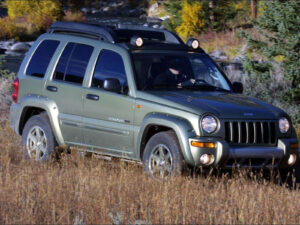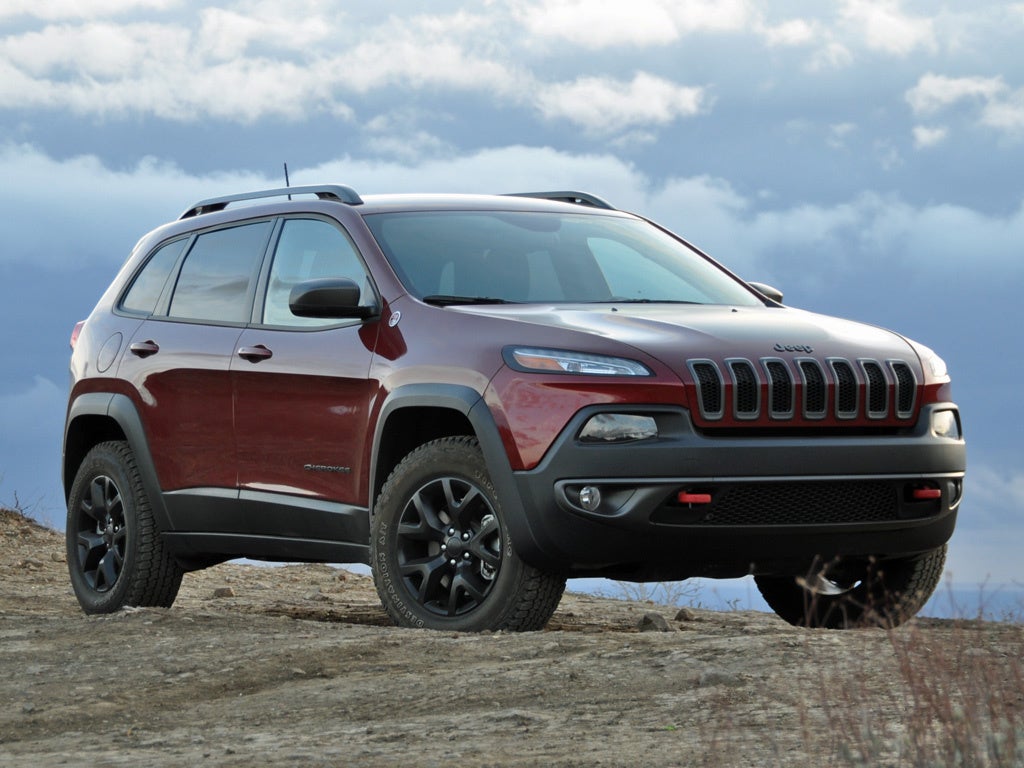The Jeep Cherokee Water Tube is a vital component of the vehicle’s cooling system. It plays a crucial role in maintaining the optimal temperature of the engine, preventing overheating, and ensuring smooth operation. In this comprehensive guide, we will explore the inner workings of the Jeep Water Tube, its importance, common issues that may arise, and how to troubleshoot and repair them. Whether you are a Jeep enthusiast or a novice car owner, this article will serve as your ultimate resource for understanding and maintaining the Jeep Water Tube.
What is the Jeep Water Tube?
The Jeep Water Tube is a part of the cooling system that transports coolant from the radiator to the engine and back. It consists of a series of tubes and hoses that circulate the coolant, allowing it to absorb heat from the engine and dissipate it through the radiator. The water tube is typically made of durable materials such as aluminum or plastic, designed to withstand high temperatures and pressure. It is located near the engine block and connects various components of the cooling system, including the radiator, thermostat, and water pump.
Understanding the importance of the Jeep Water Tube
The Jeep Water Tube plays a critical role in maintaining the overall health and performance of the vehicle. It ensures that the engine operates within the optimal temperature range, preventing overheating and potential damage. By circulating coolant throughout the cooling system, the water tube helps regulate the engine’s temperature and dissipates excess heat. It also allows the coolant to absorb heat from various engine components, such as the cylinder head and engine block, preventing them from reaching dangerous temperatures.
A properly functioning water tube is essential for the efficient operation of the cooling system. If the water tube is compromised or damaged, coolant may not circulate properly, leading to overheating and potential engine damage. Regular maintenance and inspection of the water tube are crucial to ensure its optimal performance and prevent any issues that may arise.
Common issues with the Jeep Water Tube
Despite its importance, the Jeep Water Tube can experience various issues over time. Some common problems include leaks, clogs, and cracks. These issues can be caused by factors such as wear and tear, exposure to extreme temperatures, or the use of low-quality coolant. It is important to be aware of these issues and address them promptly to prevent further damage to the cooling system.
 Leaks in the water tube can occur due to deteriorated seals, loose connections, or corrosion. These leaks can lead to coolant loss and a decrease in the overall efficiency of the cooling system. Clogs can occur when debris or sediment accumulates inside the water tube, obstructing the flow of coolant. This can result in overheating and potential engine damage. Cracks in the water tube can develop over time, especially if the vehicle is exposed to extreme temperatures or experiences significant vibrations. These cracks can cause coolant leakage and compromise the performance of the cooling system.
Leaks in the water tube can occur due to deteriorated seals, loose connections, or corrosion. These leaks can lead to coolant loss and a decrease in the overall efficiency of the cooling system. Clogs can occur when debris or sediment accumulates inside the water tube, obstructing the flow of coolant. This can result in overheating and potential engine damage. Cracks in the water tube can develop over time, especially if the vehicle is exposed to extreme temperatures or experiences significant vibrations. These cracks can cause coolant leakage and compromise the performance of the cooling system.
How to identify a faulty Jeep Water Tube?
Identifying a faulty Jeep Water Tube is crucial to prevent further damage to the vehicle’s cooling system. Here are some signs that indicate a potential issue with the water tube:
Coolant leakage: If you notice puddles of coolant underneath your vehicle or a decrease in coolant levels, it may indicate a leak in the water tube.
Overheating: If your engine temperature gauge consistently reads high or you observe steam coming from the engine compartment, it may be a sign of a faulty water tube.
Engine performance issues: A compromised water tube can lead to engine performance problems such as rough idling, misfiring, or a decrease in power.
Visible cracks or damage: Inspect the water tube visually for any visible cracks, bulges, or signs of damage. These can be indications of a faulty water tube.
If you observe any of these signs, it is important to address the issue promptly to prevent further damage to the cooling system and engine.
DIY troubleshooting and repair for the Jeep Water Tube
While some water tube issues may require professional assistance, there are certain troubleshooting and repair steps you can take on your own. Here are some DIY tips to address common water tube problems:
Leak detection: Start by visually inspecting the water tube for any visible leaks or signs of damage. If you cannot identify the source of the leak, use a coolant pressure tester to pressurize the system and locate the leak.
Seal replacement: If you have identified a leak in the water tube, it may be possible to repair it by replacing the seals or gaskets. Refer to the vehicle’s service manual or consult a trusted mechanic for guidance on seal replacement.
Clearing clogs: If you suspect a clog in the water tube, you can try flushing the cooling system with a coolant flush solution. Follow the manufacturer’s instructions and use a flushing kit to remove any debris or sediment that may be obstructing the water tube.
Patching cracks: Small cracks in the water tube can sometimes be repaired using epoxy or a specialized coolant-resistant sealant. Clean the area around the crack, apply the sealant according to the manufacturer’s instructions, and allow it to cure.
It is important to note that these DIY troubleshooting and repair steps are general guidelines and may not be applicable to all water tube issues. If you are unsure or uncomfortable performing these tasks, it is recommended to seek professional help.
When to seek professional help for the Jeep Water Tube
While DIY troubleshooting and repair can be effective for certain water tube issues, there are situations where it is best to seek professional assistance. Here are some scenarios when you should consider consulting a trusted mechanic:
Major leaks: If the water tube is severely damaged or has a major leak, it is advisable to have it inspected and repaired by a professional. They have the expertise and tools to properly diagnose and address the issue.
Complex repairs: Some water tube issues may require specialized knowledge or equipment to repair. If you are unsure about the complexity of the repair or lack the necessary tools, it is best to entrust the job to a professional.
Warranty concerns: If your vehicle is still under warranty, it is important to consult an authorized dealer or service center for any water tube issues. Attempting DIY repairs may void the warranty, so it is best to seek professional help in such cases.
Remember, the cooling system is a critical component of your vehicle, and any improper repairs or maintenance can lead to further damage and costly repairs. When in doubt, it is always better to consult a professional.
Upgrading and enhancing the performance of the Jeep Water Tube
While the stock Jeep Water Tube is designed to meet the vehicle’s cooling needs, some enthusiasts may opt for aftermarket upgrades to enhance the performance of their cooling system. Upgraded water tubes may offer improved durability, better coolant flow, or enhanced heat dissipation.
However, it is important to note that aftermarket upgrades may void the vehicle’s warranty and may require professional installation. Consult with trusted experts or mechanics who specialize in Jeep modifications to ensure compatibility and proper installation.
Jeep Water Tube maintenance tips and tricks
Regular maintenance of the Jeep Water Tube is crucial to extend its lifespan and ensure optimal performance. Here are some maintenance tips and tricks to keep your water tube in top condition:
Coolant flush and replacement: Follow the manufacturer’s recommended intervals for coolant flush and replacement. This will help remove any contaminants or debris that may accumulate in the water tube and prevent clogs.
Visual inspection: Regularly inspect the water tube for any visible signs of damage, cracks, or leaks. Address any issues promptly to prevent further damage to the cooling system.
Hose clamps and connections: Check the hose clamps and connections of the water tube for tightness and secure them if necessary. Loose connections can lead to coolant leakage and affect the performance of the cooling system.
Coolant quality: Always use high-quality coolant recommended by the vehicle manufacturer. Low-quality coolant can lead to corrosion, clogs, and other water tube issues.
By following these maintenance tips and tricks, you can ensure the longevity and optimal performance of your Jeep Water Tube.
Where to purchase genuine Jeep Water Tubes
When it comes to purchasing genuine Jeep Water Tubes or any other parts for your vehicle, it is important to rely on authorized dealers or reputable online suppliers. Genuine parts ensure compatibility, quality, and longevity. Check with your local Jeep dealer or trusted online retailers specializing in Jeep parts to find authentic water tubes for your vehicle.
FAQs
Q: How often should I inspect my Jeep Water Tube?
A: It is recommended to visually inspect the water tube during regular maintenance intervals or whenever you suspect an issue. Additionally, perform a thorough inspection if you observe any signs of coolant leakage or overheating.
Q: Can I use aftermarket coolant in my Jeep Cherokee?
A: While aftermarket coolants may offer certain benefits, it is advisable to use coolant recommended by the vehicle manufacturer. Consult the owner’s manual or contact a trusted Jeep service center for the appropriate coolant specifications.
Q: How long does a Jeep Water Tube typically last?
A: The lifespan of a water tube can vary depending on various factors such as driving conditions, maintenance, and quality. On average, a well-maintained water tube can last anywhere from 50,000 to 100,000 miles. Regular inspections and maintenance can help extend its lifespan.
Conclusion
The Jeep Water Tube is a fundamental component of the vehicle’s cooling system, ensuring optimal engine temperature and performance. Understanding its importance, identifying common issues, and learning how to troubleshoot and repair them is crucial for any Jeep owner. By following proper maintenance practices and seeking professional help when needed, you can keep your Jeep Cherokee running smoothly with a reliable and efficient water tube. Remember to consult authorized dealers or reputable suppliers for genuine parts to ensure compatibility and quality. With this comprehensive guide, you now have the ultimate resource to unveil the secrets of the Jeep Water Tube.



